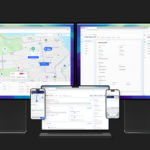Campus Safety recently launched a scenario-based training exercise series to help schools improve safety and security. These exercises help strengthen emergency plans by bringing a variety of campus stakeholders to the same table and presenting them with real-life scenarios.
Guy Bliesner, an analyst for the Idaho Office of School Safety and Security (IOSSS), provided us with incidents that happened at Idaho schools in the last five years and how those particular schools responded.
Each scenario provides details of the event, along with the real outcome and findings from an after-action report. They are designed to be completed in 10-15 minutes as part of an administrative meeting.
The next scenario is detailed below.
[promo_content slug=”bliesner-csc-2021-promo”]
Scenario #5
- Season: Early winter
- Day: Tuesday
- Time: 10:36 a.m.
- Weather: Overcast with intermittent snow; wind N/NE 18-22 mph
- Temperature: 23 degrees and dropping
- School type: Elementary (K-5)
- Event: This is a 2-part event:
- Part 1: Your school has just suffered a power loss. Your P.A. system, phone system and computer network are down. What steps do you take?
- Part 2: Thirty minutes later, you are notified that the power will be out the rest of the school day with restoration scheduled for between 4 p.m. and 6 p.m. Power for a 3-mile radius is also out, affecting a large number of your students’ homes. What steps do you take now?
How the School Handled the Situation
Hallway and classroom emergency lights are functioning and provide dim illumination sufficient for student movement. Students from interior classrooms without windows are moved to perimeter classrooms with windows. Directions for this process are delivered classroom to classroom by the principal and office staff.
The principal initially called the district office and in consultation with the superintendent, the decision is made to wait for more information from the power company as to the expected duration of the outage.
The lack of power affects the heating plant fans and the temperature in the building begins to slowly drop. The kitchen/cafeteria is in the center of the building and largely without windows. Plans are made for sack meals to be prepared at an unaffected school.
The power company calls and the outage is expected to run the remainder of the school day. The time is now 11:22 a.m. and the superintendent has just arrived on-site. The temperature in the building is noticeably cooler with the hall thermometer reading 59 degrees.
The sack meals arrive. The decision is made to distribute the meals to classrooms and begin the process to close the school. The local media is notified, and teachers are asked to use their personal cell phones to call parents. The school staff is unable to contact approximately 20% of parents. Lack of access to the student information system (S.I.S.) for emergency contact information complicates this process. By 1:15 p.m., 80% of the student population has been picked up. This leaves just under 100 students in the school.
Movement in and out of the school as parents get their children has caused the temperature to drop under 50 degrees in most of the school. The principal decides to move the remaining student to an unaffected school in the district and utilizes access to the S.I.S. to complete the parent notification process. Buses are dispatched and loaded by 1:43 p.m. and the movement to the new school is complete by 2:10 p.m. A notification is not left on the door of the affected school and no staff members remain.
By 1:55 p.m., the district office is receiving angry and panicked calls from parents who have gone to the now-empty school expecting to pick up their children. The superintendent calls the local media at 2:20 p.m. to inform them of the change in student location.
At approximately 2:30 p.m., staff begins calls to students’ emergency contacts provided to them by the S.I.S. at the relocation school. As parents are coming to the relocation school to pick up their children, a significant number of parents discuss the lack of notification. By 3:10 p.m., all students have been returned to their parents.
The local TV news runs an uncomplimentary story on the process and this begins a public relations issue that ends with several angry parents at the next board meeting.
After-Action Review Findings
An after-action review (AAR) of a response should always be completed following an incident. See Part 1 for questions that IOSSS says should be used to review a response.
The AAR in this case determined the loss of power incident was generally well handled with the exception of communications. As a result:
- Communications processes were reviewed and a parent mass notification system was developed.
- A specific process for school relocation was developed, including notification and keeping some staff present at the affected school to direct parents to the relocation site.
Check Out Some of These Other Tabletop Exercises
- Tabletop Exercise 1: Student Hasn’t Returned Home from School. What Would You Do?
- Tabletop Exercise 2: Worsening Odor Leads to Student Asthma Attack
- Tabletop Exercise 3: Loud Voices, Smell of Alcohol Coming from Main Office
- Tabletop Exercise 4: Minivan with 4 Students Rear-ends School Bus
- Tabletop Exercise 6: Chemistry Teacher Drops Beaker Containing Mercury
- Tabletop Exercise 7: Armed Robber Barricaded in Home Adjacent to School
- Tabletop Exercise 8: Third-Grade Teacher Collapses During Class
- Tabletop Exercise 9: Anonymous Tip Says Student Plans to Bring Weapon to School
- Tabletop Exercise 10: Student Goes Into Anaphylactic Shock
- Tabletop Exercise 11: Student on School Roof Threatens Suicide













